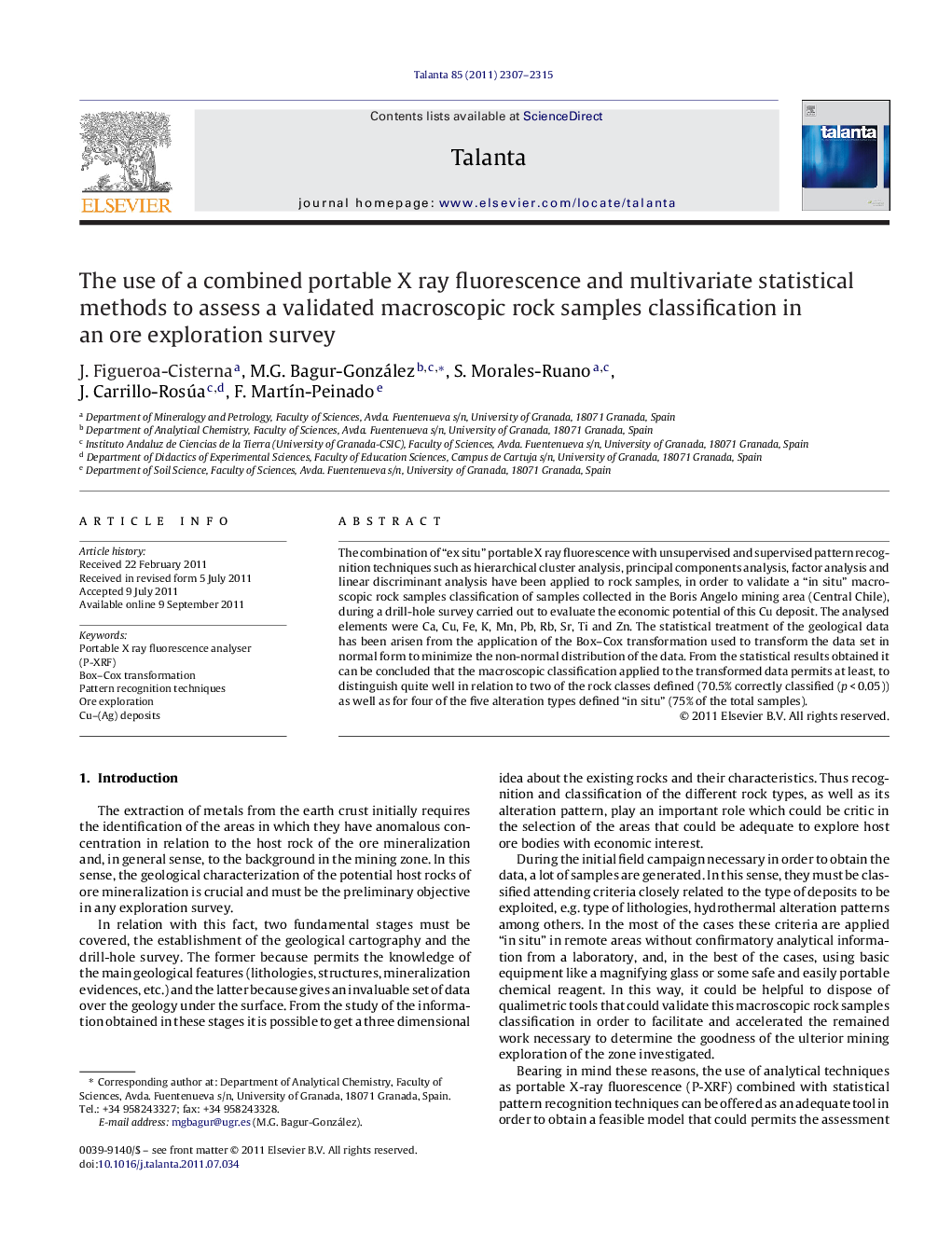| Article ID | Journal | Published Year | Pages | File Type |
|---|---|---|---|---|
| 10559672 | Talanta | 2011 | 9 Pages |
Abstract
The combination of “ex situ” portable X ray fluorescence with unsupervised and supervised pattern recognition techniques such as hierarchical cluster analysis, principal components analysis, factor analysis and linear discriminant analysis have been applied to rock samples, in order to validate a “in situ” macroscopic rock samples classification of samples collected in the Boris Angelo mining area (Central Chile), during a drill-hole survey carried out to evaluate the economic potential of this Cu deposit. The analysed elements were Ca, Cu, Fe, K, Mn, Pb, Rb, Sr, Ti and Zn. The statistical treatment of the geological data has been arisen from the application of the Box-Cox transformation used to transform the data set in normal form to minimize the non-normal distribution of the data. From the statistical results obtained it can be concluded that the macroscopic classification applied to the transformed data permits at least, to distinguish quite well in relation to two of the rock classes defined (70.5% correctly classified (p < 0.05)) as well as for four of the five alteration types defined “in situ” (75% of the total samples).
Related Topics
Physical Sciences and Engineering
Chemistry
Analytical Chemistry
Authors
J. Figueroa-Cisterna, M.G. Bagur-González, S. Morales-Ruano, J. Carrillo-Rosúa, F. MartÃn-Peinado,
